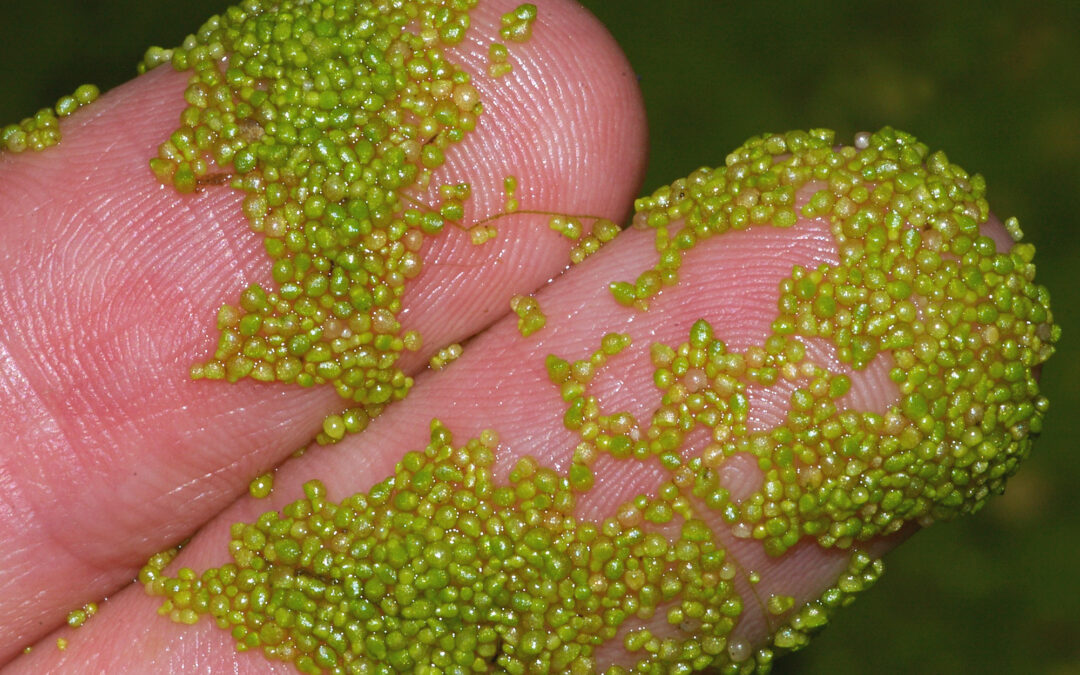Having a beautiful pond on your property can be a source of joy and tranquility. However, the serene surface of the water may sometimes become marred by the appearance of aquatic weeds like watermeal and duckweed. These tiny plants, though seemingly harmless, can rapidly multiply and create significant issues for the health and aesthetics of your pond. Here, Healthy Ponds covers a few effective methods for duckweed and watermeal treatment for your pond.
What Do Watermeal and Duckweed Look Like?
It’s quite simple to identify duckweed and watermeal because both plants have unique features. When you look from afar, they might resemble a dense plankton bloom or a mat of filamentous algae. However, if you stand at the water’s edge, you can easily see that they are actually tiny, individual plants floating freely in the water, numbering in the millions.
Duckweed is a floating plant that looks like tiny clovers in a light green color. It’s even smaller than the tip of your pinky finger and has hair-like white roots underneath. On the other hand, watermeal, which is the tiniest flowering plant on Earth, appears as light-green, rootless grains that feel like cornmeal when you touch them.
How to Treat and Control Watermeal and Duckweed
Use Fish to Control Growth
Adding tilapia to your pond can be a beneficial strategy for managing watermeal and duckweed. Tilapia are known for their voracious appetite and can consume significant amounts of these tiny aquatic plants, helping to keep their populations in check.
Avoiding Adding Grass Clippings
When you mow your lawn near the pond, it’s essential not to allow the grass clippings to fall into the water. Grass clippings are rich in nutrients, especially nitrogen and phosphorus, which can act as fertilizers for aquatic plants, including duckweed and watermeal. These nutrients can fuel their growth, leading to significant infestations. Instead, collect the grass clippings or direct them away from the pond to prevent nutrient buildup in the water.
Using Vegetated Buffers to Slow Runoff
Creating vegetated buffers around the pond’s edges can be highly beneficial. Vegetated buffers are areas with natural vegetation, such as grasses, shrubs, and trees, that act as a filter for water flowing into the pond.
Keeping Livestock and Waterfowl Away from Pond
Livestock and waterfowl, such as ducks and geese, can contribute to nutrient loading in ponds. Allowing livestock and waterfowl access to the pond can lead to an increase in nutrient levels, making it easier for duckweed and watermeal to thrive and spread rapidly.
Contact Us to Learn About Additional Options for Duckweed and Watermeal Treatment
View our watermeal treatment products and purchase yours today for a thriving pond! If you have any questions before making your purchase, reach out to us.


